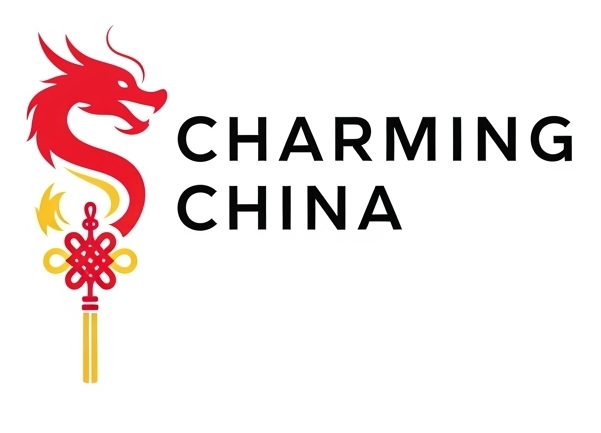Chinese Jewelry Symbols and Their Meanings: Longevity, Prosperity, Love
Every charm, pendant, and pattern in Chinese jewelry carries a story — one that has been passed down for centuries. From the peach of immortality to the double happiness symbol, traditional Chinese motifs are not just decorations; they express blessings, values, and hopes for life.
Today, these meaningful designs continue to inspire modern jewelry — connecting the past’s craftsmanship with contemporary elegance. Let’s explore the timeless symbols of longevity, prosperity, and love in Chinese jewelry, and what they mean when you wear or gift them.
Longevity (长寿 – Chángshòu)
Longevity is one of the most cherished blessings in Chinese culture — often symbolizing a long, healthy, and fulfilling life.
Common Longevity Symbols:
- Shou Character (寿): The most classic symbol, appearing in gold pendants, rings, and carvings. It represents life’s greatest fortune — long life with happiness.
- Peach (寿桃): Said to grow in the garden of the Queen Mother of the West, the peach is the fruit of immortality. It’s often seen in jade carvings or pendant charms.
- Crane (仙鹤): The crane is a mythical bird that lives for thousands of years, often depicted flying among clouds — a wish for eternal youth.
- Turtle (龟): Known for its long lifespan, the turtle stands for endurance and stability — making it a meaningful charm for elders.
In jewelry, these motifs are usually crafted in gold or jade, emphasizing not just wealth, but health and harmony through generations.
Prosperity (富贵 – Fùguì)
Wealth and success are another central wish in Chinese symbolism, rooted in the hope for a flourishing family and career.
Prosperity Symbols:
- Ruyi (如意): Literally “as you wish,” the ruyi scepter symbolizes power, success, and good fortune. You’ll find it in gold pendants or brooches with auspicious curves.
- Goldfish (金鱼): “Gold” (金) and “abundance” (余) share the same sound in Chinese — so goldfish represent abundance in wealth and happiness.
- Coins and Ingots (元宝): Ancient currency shapes in jewelry symbolize financial security and endless fortune.
- Peony (牡丹): Known as the king of flowers, the peony represents wealth, honor, and feminine beauty — often engraved on bangles or earrings.
These prosperity motifs make ideal gifts for business openings, new year blessings, or milestone birthdays, carrying both beauty and meaning.
Love & Marriage (爱情与婚姻 – Àiqíng yǔ Hūnyīn)
Love in Chinese symbolism is not only romantic — it’s about harmony, loyalty, and a bond that lasts through time.
Love Symbols:
- Double Happiness (囍): The most recognized love symbol, used in weddings to represent marital joy and union. Jewelry with this character makes popular bridal gifts.
- Mandarin Ducks (鸳鸯): Always seen in pairs, these ducks mate for life — symbolizing devotion and eternal love.
- Lotus (莲花): The lotus rises unstained from mud, symbolizing pure love and spiritual harmony. “莲” also sounds like “连” (to connect), expressing togetherness.
- Butterfly (蝴蝶): From the legend of Liang Shanbo and Zhu Yingtai, butterflies symbolize romantic transformation and freedom in love.
Modern designers often reinterpret these motifs into minimalist gold or silver pieces — bringing ancient romance into today’s style.
Jade: The Stone of Virtue
In Chinese culture, jade (玉) is more than a gemstone — it’s believed to hold protective and spiritual energy. Confucius once said, “The wise find joy in jade.”
Jade jewelry often combines auspicious symbols, representing:
- Purity and wisdom (white jade)
- Growth and vitality (green jade)
- Protection and balance (black jade)
A jade pendant carved with a crane, peach, or lotus carries both beauty and blessing, passed from generation to generation.
The Modern Revival of Symbolic Jewelry
Today, symbolic jewelry is making a global comeback. Designers reinterpret these traditional motifs into sleek, wearable art — from dainty double-happiness necklaces to minimalist jade pendants.
For many young people, wearing symbolic jewelry is not just fashion — it’s a quiet connection to heritage, hope, and identity. Whether gifted for birthdays, weddings, or new beginnings, these pieces carry heartfelt wishes that transcend language.
From longevity and prosperity to love, every Chinese jewelry symbol tells a story — a story of blessings, harmony, and timeless artistry. These motifs remind us that jewelry is more than adornment — it’s a wish you wear, a charm for good fortune, and a bridge between generations. When you wear Chinese jewelry, you’re not just wearing art — you’re carrying centuries of meaning close to your heart.
FAQ
Q1: What are the most common symbols in Chinese jewelry?
Popular motifs include the Shou character, double happiness, goldfish, crane, and ruyi — all representing luck, health, or love.
Q2: Why is jade so important in Chinese jewelry?
Jade symbolizes purity, protection, and virtue. It’s believed to absorb energy from its wearer and bring balance.
Q3: Is symbolic jewelry only for traditional occasions?
Not at all — modern jewelry brands now blend classic symbols with minimalist or Western designs for daily wear.
Q4: What jewelry is best for gifts?
Gold pieces with longevity or love symbols make perfect wedding or birthday gifts, carrying positive wishes.
Q5: What do mandarin ducks symbolize?
They represent faithful, lifelong love — an ideal wedding motif and a favorite among romantic jewelry designs.
